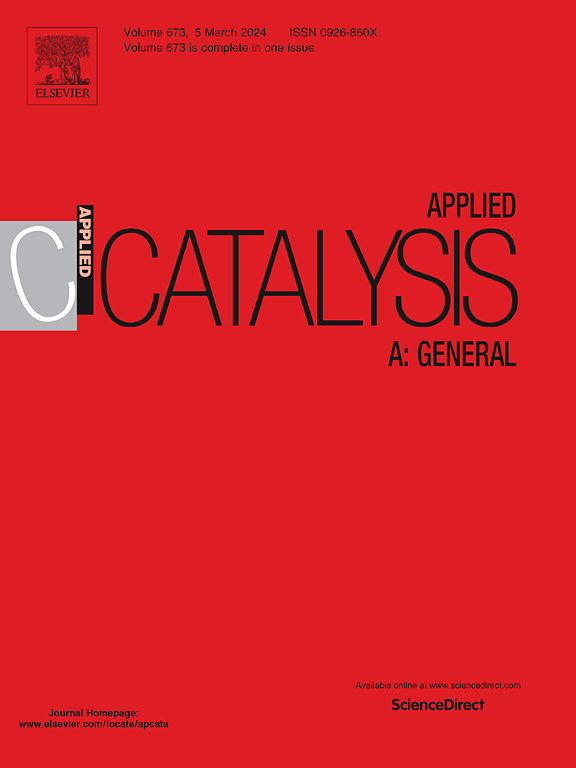双掺杂MnO2催化剂对CH3OH氧化的构效关系研究
IF 4.8
2区 化学
Q2 CHEMISTRY, PHYSICAL
引用次数: 0
摘要
二氧化锰基催化剂因其经济高效的优点,在挥发性有机化合物的催化氧化中得到了广泛的应用。在本研究中,系统地研究了一系列不同含量的双掺杂MnO2催化剂,揭示了CH3OH氧化反应过程中的构效关系,并通过一系列表征得到了结果。Bi可以进入MnO2晶格,导致氧空位的形成,有利于O2解离产生表面活性氧。随着Bi的增加,活性呈火山状,其中Mn7.5Bi1Ox (T90 = 160℃)表现出最低的表观活化能和最佳的性能。原位漂移揭示了CH3OH氧化机制(CH3OH→甲氧基态→甲酸态→CO2和H2O),后两个氧化过程明显加快。双掺杂MnO2表现出较高的耐水性能,这是由于氢键辅助的CH3OH化学吸附和表面活性氧的羟基辅助C-H活化。这些发现有助于合理设计富氧空位缺陷金属掺杂催化剂用于催化氧化。本文章由计算机程序翻译,如有差异,请以英文原文为准。
Elucidating the structure-activity relationship of Bi-doped MnO2 catalysts towards CH3OH oxidation
MnO2-based catalysts have been extensively utilized in the catalytic oxidation of volatile organic compounds due to their cost-effectiveness. In this study, a series of Bi-doped MnO2 catalysts with various contents were systematically investigated to reveal the structure-activity relationship during the CH3OH oxidation reaction, which was achieved using a series of characterizations. Bi could enter the MnO2 lattice and lead to the facile formation of oxygen vacancies, facilitating the generation of surface reactive oxygen species by O2 dissociation. With the increase of Bi, the activity showed a volcanic trend, and the Mn7.5Bi1Ox (T90 = 160 °C) exhibited the lowest apparent activation energy and optimal performance. CH3OH oxidation mechanism (CH3OH → methoxy species → formate species → CO2 and H2O) was revealed by in situ DRIFTS, and the last two oxidation processes were significantly sped up. Bi-doped MnO2 exhibited high H2O tolerance due to hydroxyl-assisted CH3OH chemisorption via hydrogen bonding and hydroxyl-assisted C-H activation of methoxy species with surface reactive oxygen species. These findings are beneficial for the rational design of metal-doped catalysts with rich oxygen vacancy defects for catalytic oxidation.
求助全文
通过发布文献求助,成功后即可免费获取论文全文。
去求助
来源期刊

Applied Catalysis A: General
化学-环境科学
CiteScore
9.00
自引率
5.50%
发文量
415
审稿时长
24 days
期刊介绍:
Applied Catalysis A: General publishes original papers on all aspects of catalysis of basic and practical interest to chemical scientists in both industrial and academic fields, with an emphasis onnew understanding of catalysts and catalytic reactions, new catalytic materials, new techniques, and new processes, especially those that have potential practical implications.
Papers that report results of a thorough study or optimization of systems or processes that are well understood, widely studied, or minor variations of known ones are discouraged. Authors should include statements in a separate section "Justification for Publication" of how the manuscript fits the scope of the journal in the cover letter to the editors. Submissions without such justification will be rejected without review.
 求助内容:
求助内容: 应助结果提醒方式:
应助结果提醒方式:


